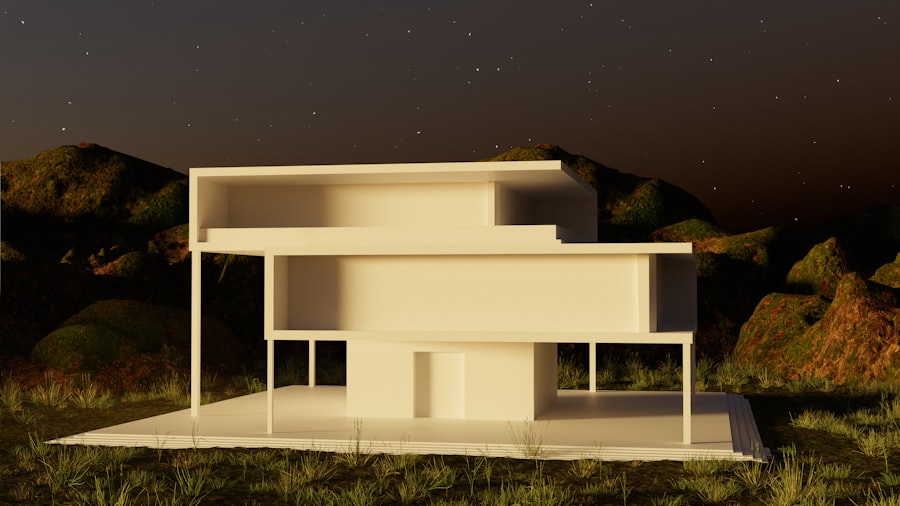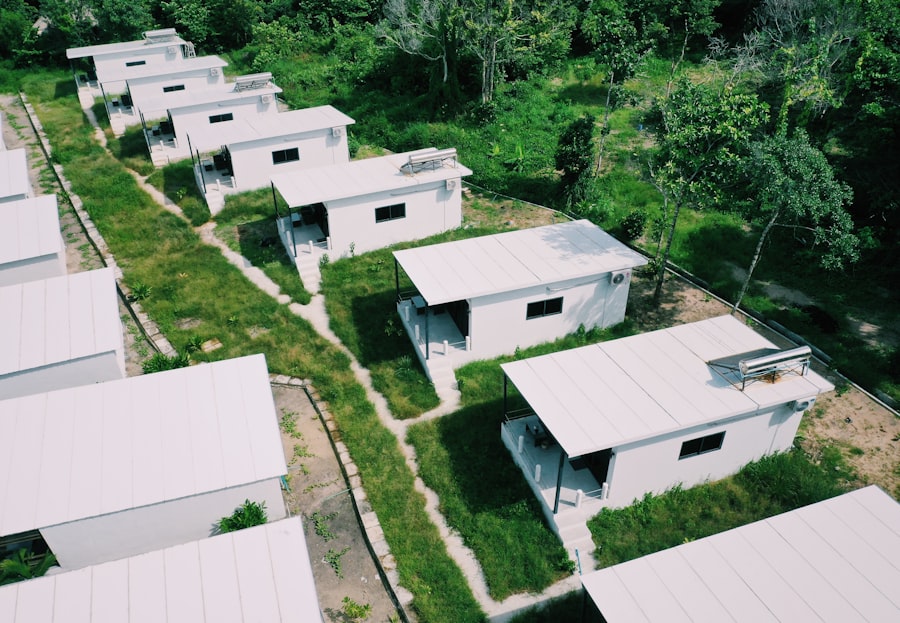Modular homes are a unique and innovative approach to residential construction, distinguished by their method of assembly. Unlike traditional homes, which are built entirely on-site, modular homes are prefabricated in sections, or “modules,” in a factory setting. These modules are constructed to meet the same building codes and standards as site-built homes, ensuring that they are safe and durable.
Once completed, the modules are transported to the building site, where they are assembled on a permanent foundation. This process not only streamlines construction but also allows for greater quality control, as the controlled environment of a factory minimizes the impact of weather and other external factors. The modular home construction process typically involves several stages, including design, manufacturing, transportation, and assembly.
Homebuyers can choose from a variety of designs and layouts, often customizing their homes to fit their specific needs and preferences. The factory construction process can significantly reduce the time it takes to build a home, with many modular homes being completed in a matter of weeks rather than months. This efficiency is one of the key reasons why modular homes have gained popularity among those seeking affordable and timely housing solutions.
Key Takeaways
- Modular homes are factory-built structures assembled on-site, offering efficient construction and quality control.
- They provide benefits like faster build times, cost savings, and energy efficiency compared to traditional homes.
- Local listings, specialized dealers, and online platforms are key resources for finding modular homes for sale nearby.
- Modular homes generally cost less than traditional homes, with financing options similar to conventional mortgages.
- Customization options allow buyers to personalize design, layout, and features to suit their preferences and needs.
Benefits of Choosing a Modular Home Over Traditional Housing
One of the most compelling advantages of modular homes is their cost-effectiveness. Because they are built in a factory setting, manufacturers can take advantage of economies of scale, reducing material costs and labor expenses. This often translates to lower prices for consumers compared to traditional homes.
Additionally, the speed of construction means that buyers can move into their new homes much sooner, which can be particularly appealing in competitive real estate markets where time is of the essence. Another significant benefit is the energy efficiency that modular homes can offer. Many manufacturers incorporate energy-efficient materials and technologies into their designs, such as high-quality insulation, energy-efficient windows, and advanced heating and cooling systems.
This focus on sustainability not only helps homeowners save on utility bills but also contributes to a reduced environmental footprint. As more people become conscious of their impact on the planet, the appeal of energy-efficient modular homes continues to grow.
Finding Modular Homes for Sale Near You: Tips and Resources

When searching for modular homes for sale, prospective buyers can utilize a variety of resources to streamline their search. Online platforms such as Zillow, Realtor.com, and specialized modular home websites provide extensive listings that allow users to filter by location, price range, and specific features. Additionally, many manufacturers have their own websites showcasing available models and local dealers who can assist with the purchasing process.
Networking within local communities can also yield valuable information about available modular homes. Attending home shows or community events focused on housing can connect buyers with builders and real estate agents who specialize in modular construction. Furthermore, social media platforms and online forums dedicated to home buying can provide insights from current modular homeowners about their experiences and recommendations for reputable builders in the area.
The Cost of Modular Homes: How They Compare to Traditional Homes
| Cost Metric | Modular Homes | Traditional Homes | Comparison |
|---|---|---|---|
| Average Cost per Square Foot | 100 – 150 | 120 – 200 | Modular homes are generally 10-25% less expensive |
| Construction Time | 3 – 6 months | 6 – 12 months | Modular homes take about half the time |
| Labor Costs | Lower (factory-based) | Higher (on-site labor) | Modular homes reduce labor costs by 20-30% |
| Material Waste | Minimal (controlled factory environment) | Higher (on-site cutting and adjustments) | Modular homes produce less waste |
| Customization Options | Moderate | High | Traditional homes offer more customization |
| Financing Availability | Widely available but sometimes limited | Widely available | Traditional homes have more financing options |
| Resale Value | Comparable to traditional homes | Standard market value | Similar resale value when quality is equal |
The cost of modular homes is often one of the most attractive aspects for potential buyers. On average, modular homes can be 10% to 20% less expensive than traditional site-built homes. This price difference is primarily due to the efficiencies gained during the manufacturing process and the reduced labor costs associated with quicker assembly times.
However, it is essential for buyers to consider additional costs that may arise during the purchasing process, such as land acquisition, site preparation, and utility connections. Financing options for modular homes can also differ from those for traditional homes. While many lenders treat modular homes similarly to site-built homes when it comes to mortgages, some may require additional documentation or have specific guidelines regarding appraisals.
Buyers should consult with financial institutions experienced in modular home financing to understand their options fully. This knowledge will help ensure that they secure favorable terms and avoid any unexpected financial hurdles during the purchasing process.
Customizing Your Modular Home: Design Options and Features
One of the most appealing aspects of modular homes is the ability to customize them according to personal preferences and lifestyle needs. Many manufacturers offer a range of floor plans that can be tailored with various design elements such as exterior finishes, interior layouts, and room configurations. Buyers can choose from an array of materials for flooring, countertops, cabinetry, and fixtures, allowing them to create a space that reflects their unique style.
In addition to aesthetic choices, many modular home builders provide options for energy-efficient upgrades and smart home technology integration. Features such as solar panels, advanced HVAC systems, and smart thermostats can be incorporated into the design to enhance energy efficiency and convenience. This level of customization not only makes modular homes appealing but also allows homeowners to invest in features that align with their values and priorities.
Financing Your Modular Home Purchase: Options and Considerations

Financing a modular home purchase involves several considerations that differ from traditional home financing. While many lenders offer loans specifically for modular homes, it is crucial for buyers to understand the nuances involved in securing financing. Some lenders may classify modular homes as personal property rather than real estate until they are permanently affixed to a foundation, which can affect loan terms and interest rates.
Buyers should explore various financing options available for modular homes, including conventional loans, FHA loans, VA loans, and USDA loans. Each type of financing has its own eligibility requirements and benefits. For instance, FHA loans may be more accessible for first-time homebuyers due to lower down payment requirements.
It is advisable for buyers to consult with mortgage brokers or financial advisors who specialize in modular home financing to navigate these options effectively.
The Process of Buying and Building a Modular Home: What to Expect
The journey of buying and building a modular home typically begins with selecting a manufacturer or builder that aligns with the buyer’s vision and budget. Once a builder is chosen, prospective homeowners will work closely with them to finalize design plans and specifications. This stage often involves selecting floor plans, materials, and any custom features desired.
After finalizing the design, the manufacturing process begins in the factory. Buyers can expect regular updates on progress as their home is constructed in sections. Once completed, these modules are transported to the building site for assembly on a prepared foundation.
The entire process from design to move-in can take significantly less time than traditional construction methods—often just a few months—allowing homeowners to settle into their new space sooner than expected.
The Future of Modular Homes: Trends and Advancements in Affordable Housing
As housing affordability continues to be a pressing issue in many regions, modular homes are emerging as a viable solution for addressing this challenge. The industry is witnessing advancements in technology that enhance both the efficiency of construction processes and the quality of finished products. Innovations such as 3D printing and advanced robotics are beginning to play a role in modular home manufacturing, potentially reducing costs further while improving precision.
Moreover, there is an increasing focus on sustainable building practices within the modular home sector. As environmental concerns gain prominence globally, manufacturers are exploring eco-friendly materials and energy-efficient designs that minimize waste during construction and reduce energy consumption over time. This trend not only appeals to environmentally conscious consumers but also positions modular homes as a forward-thinking option in the evolving landscape of affordable housing solutions.



